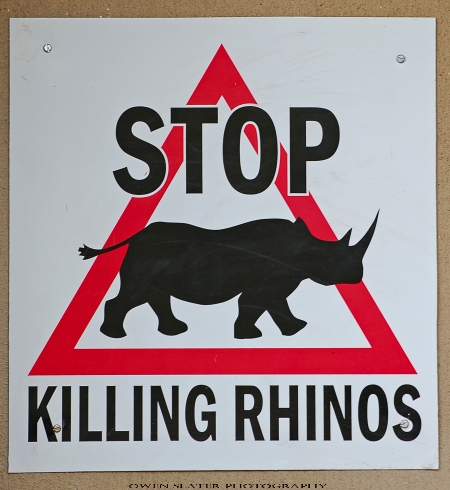I came across this sign in Kruger National Park in November 2010. At the time rhino poaching wasn’t that prevalent. Since then, poaching has skyrocketed with almost 700 rhinos poached in Africa in 2012, most coming from Kruger. Rhino horn is valued at up to $50,000/kg in Asian markets and with prices so high sophisticated poaching operations are becoming much more common. Typically these involve helicopters, and people specialized in big game hunting. Unbelievably, even wildlife veterinarians have crossed the line and are selling ultra potent narcotics to these poachers so that the rhinos can be tranquilized in minutes. Once sedated, the horns are then cut off by chainsaws and the rhinos are left to die. The most frustrating part is that rhino horn is no different from human fingernails! It is simply keratin and so people could get the same ‘effect’ by chewing their own nails!
Efforts to cut poaching have ramped up. Some game reserves are safely cutting the horns off before poachers can get to them. If done correctly, this procedure is no different from cutting the tip of a fingernail off. Other efforts include increased patrols, individual guards for animals, and some have even resorted to controversial methods such as impregnating the horns with a toxic substance that will cause harm to anyone that consumes it. Others have advocated for farming rhino for their horn, since it regrows over time. This would allow for a small amount of horn to enter the market on a routine basis that might decrease the amount of poaching. Of course educating those that consume the horn is paramount and NGOs are currently working in these regions to try to curb consumption. With any long standing problem, a multi-pronged approach is required and out of the box thinking and solutions will be needed.


Quite ironic that all that carnage comes from a false premise.
Ironic and sad!
Coincidentally, I am reading “Last Chance to See” by Douglas Adams and the very same chapter in which he focusses on the Rhino poaching tragedy in great detail.
Humans can do really cruel things with some truly inane reasons. Hope these Rhinos can be saved.
B2B.